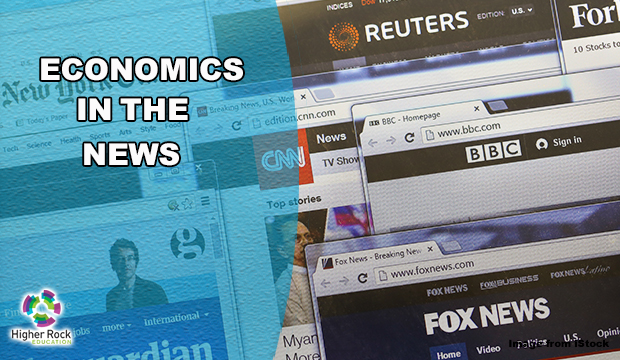
Economics in the News – Aug. 14-20, 2023
Economics impacts our lives every day. Below are some of the top storylines from this past week related to economics.
o Japan’s economy – the third largest in the world – is finally showing evidence that the country is recovering from the COVID-19 pandemic. Economic output in Japan grew by an annualized rate of six percent in the second quarter of 2023. It marked the third consecutive quarter of growth for the Japanese economy. While analysts expected robust growth, the result surpassed their average expectations.
Japan’s second quarter growth was spurred by a strong performance in exports. However, economists worry about a drop in domestic consumption where households and businesses are spending less while at home. Japan’s economic recovery from COVID-19 has been slower than other country’s because of its conservative timeline in rolling back virus precautions compared to other countries, along with supply chain issues in its export-heavy economy. [The New York Times]
o Families with young children have been faced with sharp increases in childcare, with prices rising more quickly than the overall inflation rate. The national average for preschool and daycare services climbed six percent in July from a year prior. That is nearly double the overall inflation rate of 3.2 percent, which has come down from its peak of 9.2 percent last June.
Childcare workers made an average of $19.95 per hour in June, which remains well below the national average of $33.50 per hour earned for all service workers on private payrolls. Providers are also faced with rising costs such as food, instructional materials, utilities and other expenses. Nationwide, a lack of affordable childcare has pushed many Americans out of the workforce, as some parents are unable to afford the costs. [The Wall Street Journal]
o India overtook the United Kingdom last year as the world’s fifth largest economy. However, according to the World Bank its female labor-force was 24 percent. That ranked among the 12 lowest countries in the world, including countries such as Afghanistan and Somalia. Only 38 million women were in paid employment last year, compared to 368 million men.
Why don’t more women in India work? Economists blame weak job creation with intense competition for the few available openings, along with a deeply conservative culture that places ample emphasis on a woman’s place in the home. However, India’s ambition to capitalize on its youthful demographics to attract companies that are searching for alternatives to China is complicating its historical values of women in the workplace. India could see a boost of $734 billion if the country increased its female labor force by 11 percent by 2030, according to McKinsey Global Institute. [The Wall Street Journal]
o Costco and Sam’s Club are known for their hot dog bargain that can’t be beaten. Now, the two companies are in a price war, competing based on who can offer the cheapest hot dog and soda combo deal. Costco charges $1.50 for the combo, and Sam’s Club lowered its price last November to $1.38. In an effort to boost profits, Sam’s Club has made some notable shifts to better compete against its archrival by wooing upscale shoppers to pay annual fees. Sam’s Club has invested heavily in high-quality goods and an assortment of products.
Sam’s Club is owned by Walmart and generates roughly 17 percent of the company’s profits. Sales at warehouse clubs such as Sam’s Club, Costco and BJ’s flourished during the pandemic as shoppers spent on food, furniture and clothing. The retailers’ prices on limited assortments make them less vulnerable to competition from Amazon as other retailers. [Bloomberg]
o So far, experts have estimated $3.2 billion worth of property damage caused by the Maui wildfires, leaving many without a home and 110 dead. Experts are warning that more homes across the United States may find themselves in the path of wildfires. The number of homes at a five percent of greater risk of being impacted by wildfires is expected to more than double by 2050, according to researchers from the University of Utah, Boston University, and Swansea University in Wales.
Roughly 3.3 million US households or $11 billion worth of property will be at risk of wildfire damage each year over the next three decades. The study showed roughly 1.1 million households or $4 billion in property value exposed annually between 2000 and 2018. [TIME]